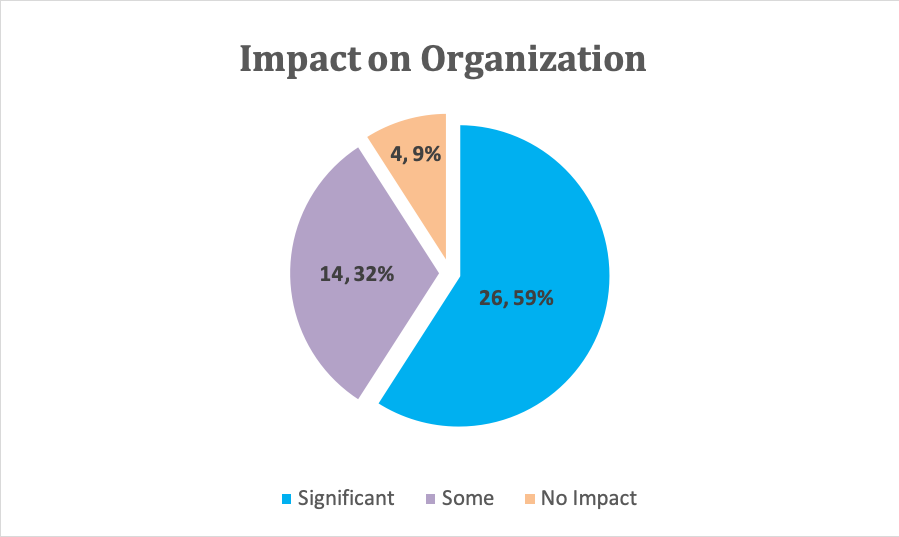Part 2
[This second (and final) installment takes a look at recent Tower grants and their impact on the target population, grantee organization, and the field at large. This analysis represents 44 grants that were closed between June 2018 and December 2019.]
Once again, we wanted to take a look at the somewhat broader impact of our grantmaking. On our lessons learned forms we also scored grants for impact (whether “significant,” “some,” or “no impact”).
We looked at three kinds of impact:
- Impact on target population (was a clinic able to see more young patients in a given month?);
- Impact on organizational capacity (did an agency develop new in-house training capacity?);
- Impact on the field (did the work help convince a state agency to expand reimbursements to a new service delivery model?).
Here are three pie charts showing what we found for the 44 grants we looked at. These were grants that were closed between June 2018 and December 2019.

I’ve tried to capture some key features of projects that demonstrated “significant” impact on the target population. Here are some things that were true of grants with target population impact rated “significant.”
- Involve expansion of services into new communities or new school districts
- Program sustained via fee for services model
- Improved instruction initiative targeted youth with learning disabilities
- Give medical professionals tools to address substance use disorders
- Urgent care clinic brought to the community
- Substance use counseling integrated within school setting
- Raising awareness and promoting mental health supports on a college campus
- Strong family support component to new services
- Legal support services for non-parental caregivers
- Several organizations came together on data mining project
- Intensive street interventions and support for at-risk youth
- Extension of disability supports on college campuses
- Focus on self-advocacy skills for young people with intellectual disabilities

Grants that demonstrated significant impact on organizational capacity were characterized by:
- Included feedback loops for continuous improvement of program and curricula
- Merger of well-aligned agencies improves efficiency and competitive position (cited 2x)
- Broad training initiative complete for faculty relating to awareness and instruction methods for youth with disabilities
- New outreach model tested and validated for creating new program chapters
- Developed model for linking clients with respite care providers
- Partnerships helped organization build capacity to screen young children
- Agency built capacity and profile as educator on substance use disorders
- Created strong referral and payer relationships for family-based intervention
- Teachers build capacity to manage behaviors in the classroom; gain instructional tools for students with dyslexia and other learning challenges
- School district builds capacity to provide on-site mental health counseling

We expect the field-level impact of our Core Programs and Services grants to be fairly modest, simply because they tend not to have field-level objectives up front. Nonetheless, about 52% had at least some potential impact on the field.
Here are a few factors that seem to contribute to field level impact.
- Target skill development in the workforce more broadly (e.g., equip general practice physicians to conduct mental health and substance use interventions)
- Robust models for college support of students with intellectual/learning disabilities (cited 2x); in one instance student support program was successful replication of existing program
- Growing interest in colleges and universities to implement mental health-focused initiatives
- Creating more advocates in the community or in the schools
- Hospital demonstrates new orientation towards partnering with community agencies
- Explore development of internet resources for respite service providers
- New partners at the state level join data access project
- Model regional approach for supporting school districts in use of assistive reading technology

